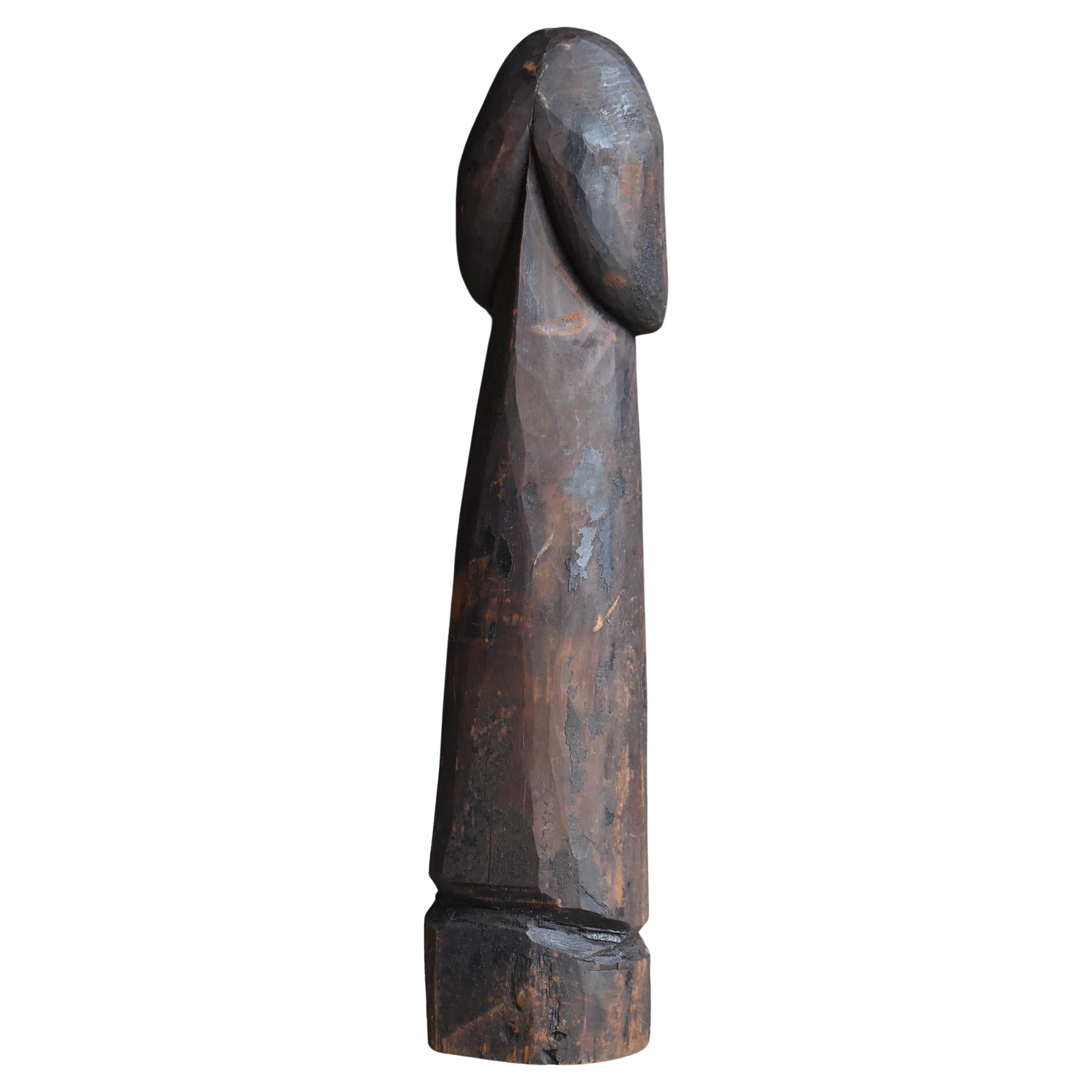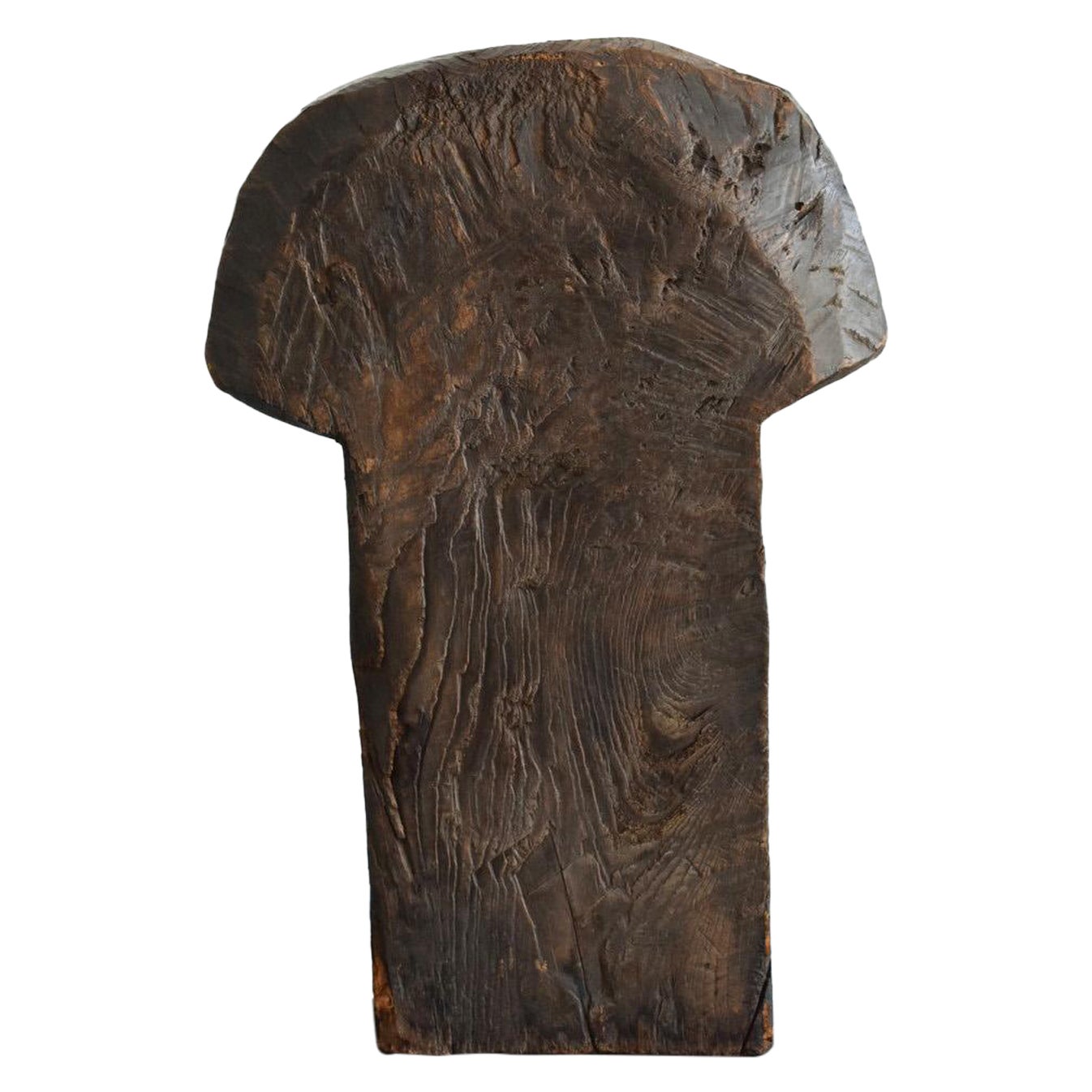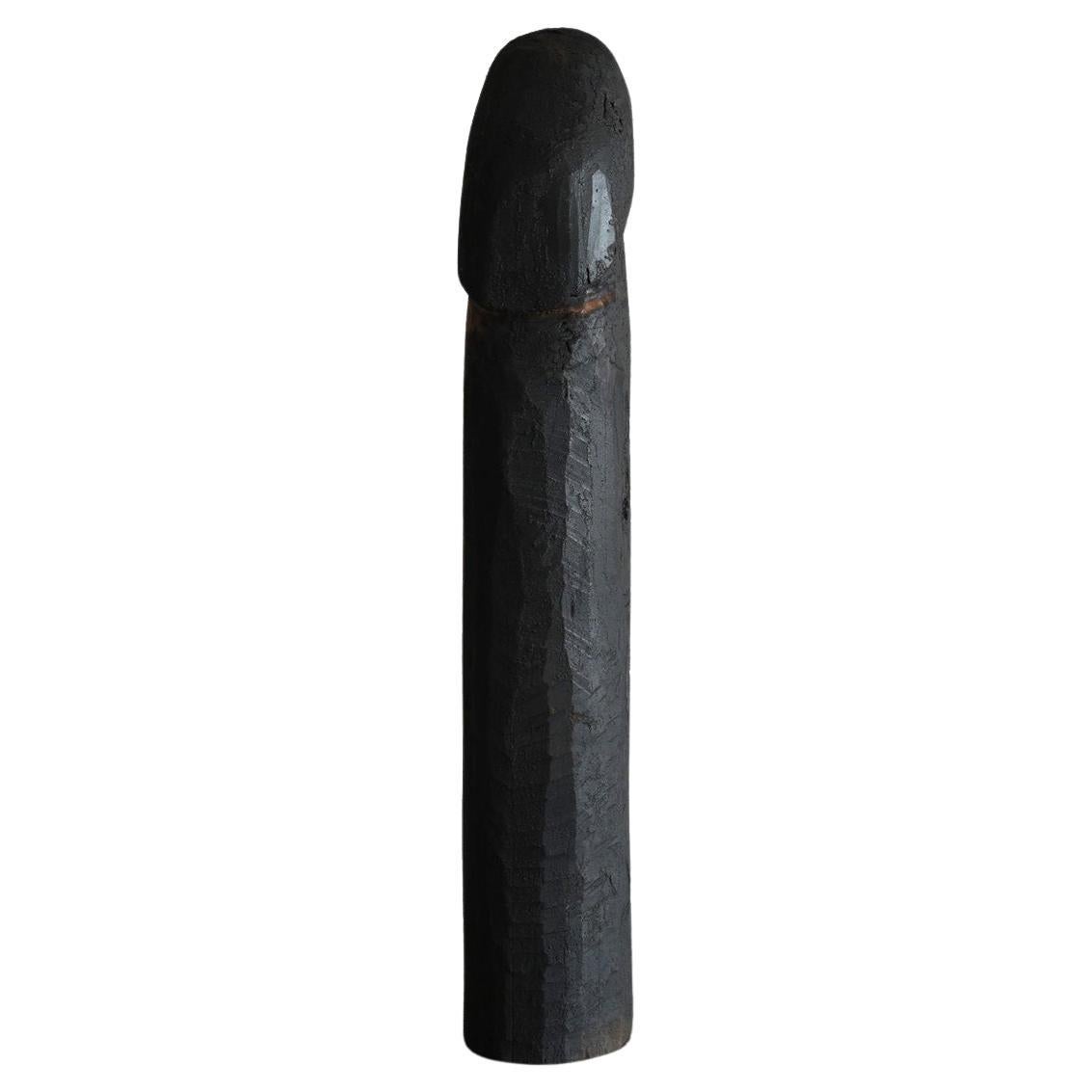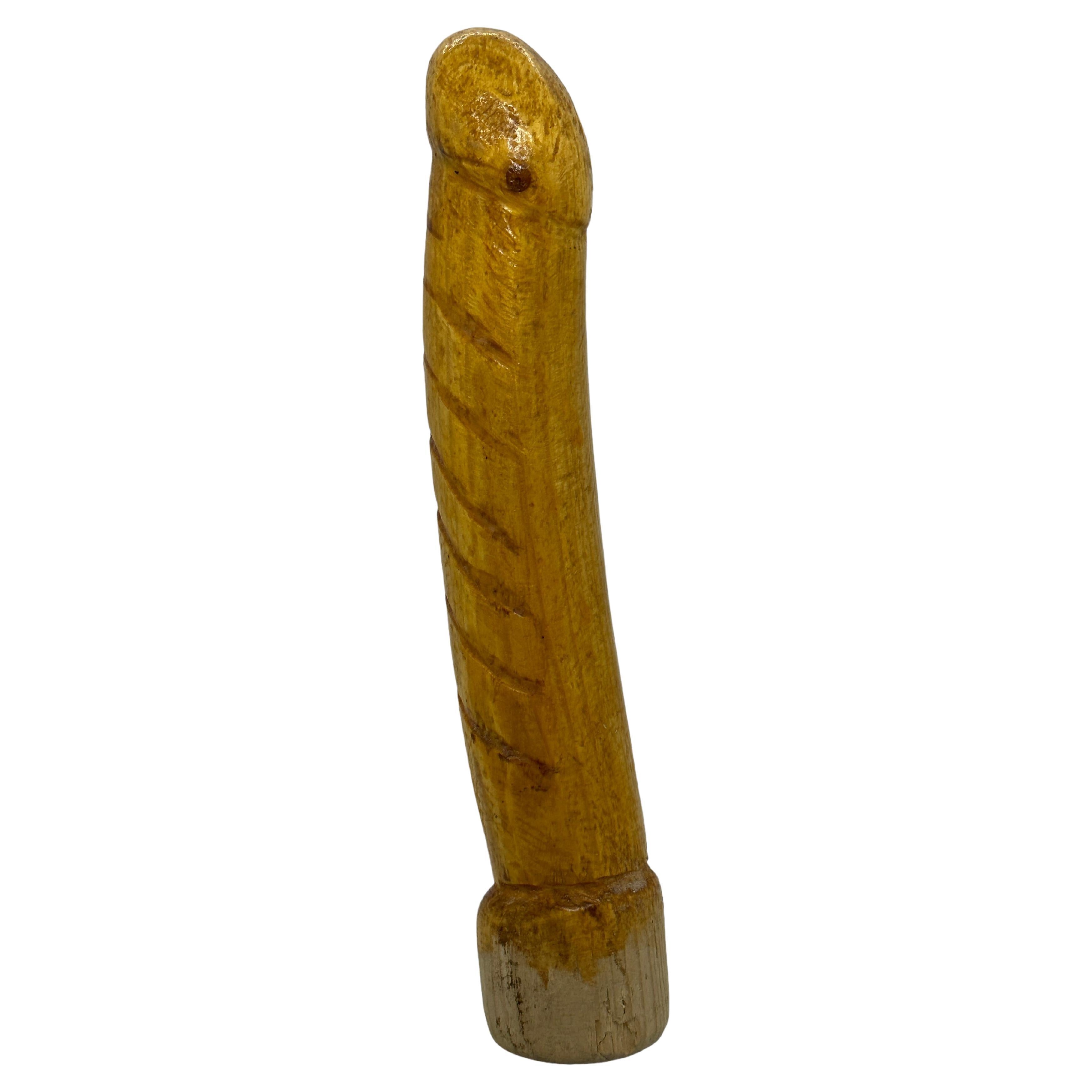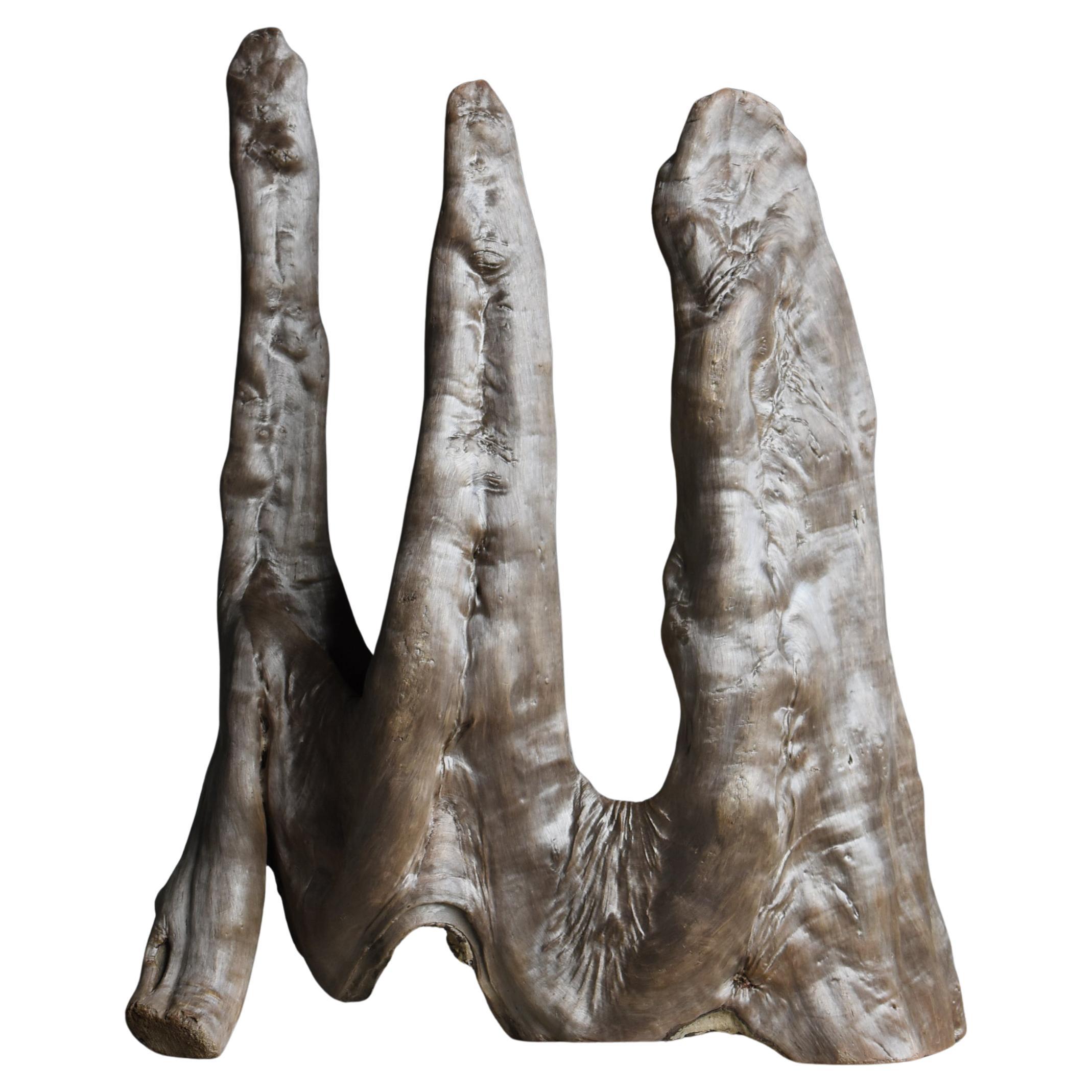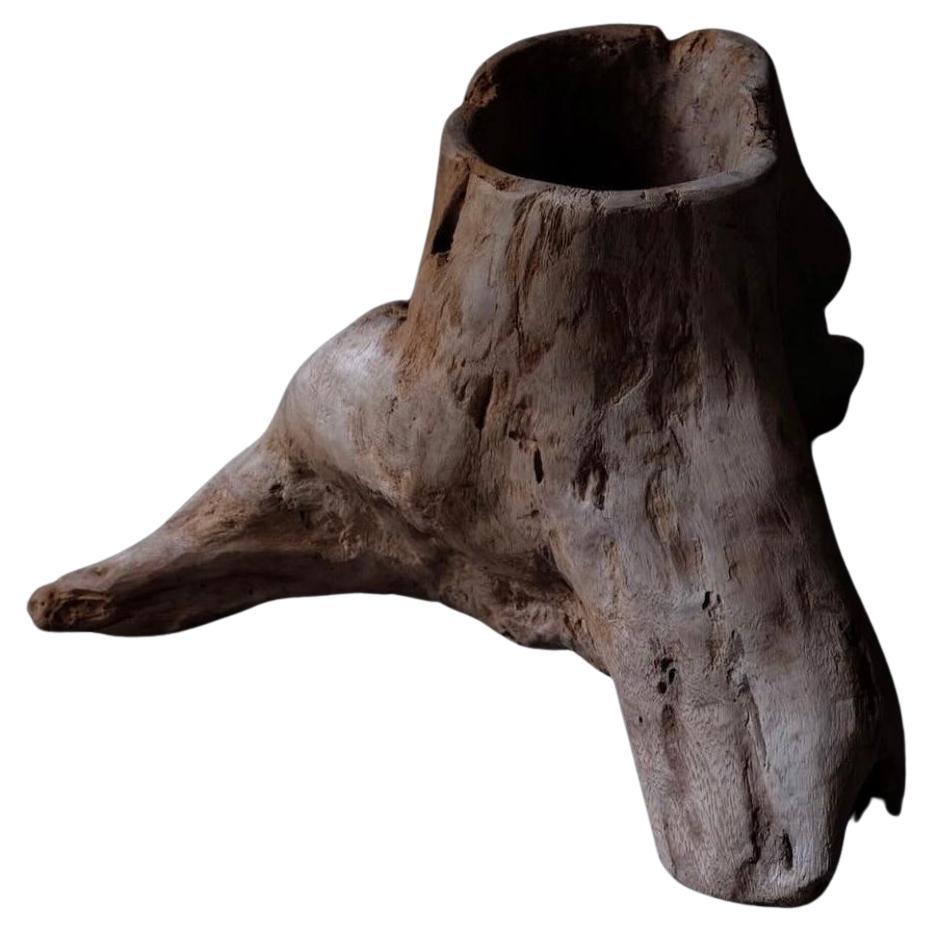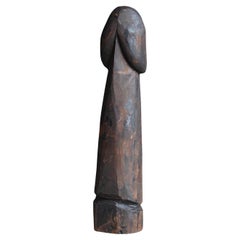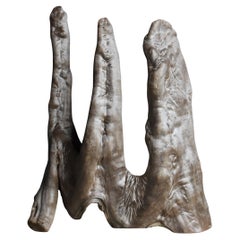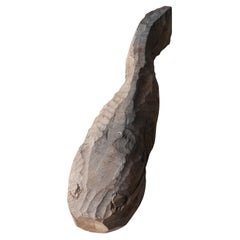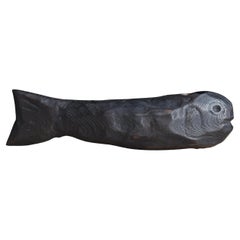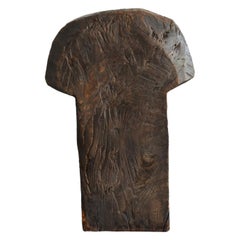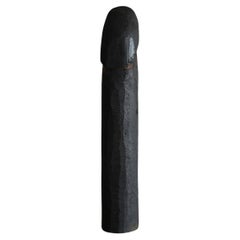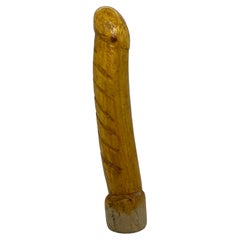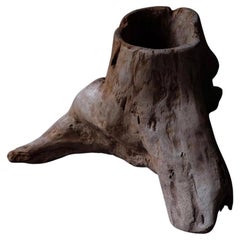Items Similar to Japanese Antique Natural Wood Penis 1860s-1920s / Figurine Object Wabisabi
Want more images or videos?
Request additional images or videos from the seller
1 of 19
Japanese Antique Natural Wood Penis 1860s-1920s / Figurine Object Wabisabi
$1,000
£766.38
€880.82
CA$1,404.55
A$1,571.95
CHF 822.86
MX$19,096.34
NOK 10,448.22
SEK 9,859.68
DKK 6,572.45
About the Item
This is a phallic statue made of natural wood produced in Japan.
It is estimated to have been created during the Meiji and Taisho periods (1860s-1920s), and is made of richly textured pine wood.
In Japan, the phallic root is a symbol of fertility, prosperity of offspring, and protection from bad luck, and has long been an object of worship in many places.
Phallic statues and votive offerings are often seen in shrines and at festivals.
People have found power in these symbols and sublimated them into a form of prayer as they lived in harmony with nature.
The realism of this work is astonishing, as it retains such a natural appearance that at first glance one cannot detect any artificial handiwork.
The smoothness of the surface, the flow of the grain, and even the natural growth of the branches are completed as an accidental beauty, so much so that it is difficult to determine how much of the work was done by human hands.
It should be noted that the tip of the tree has a small hole reminiscent of a urethra. Whether this is accidental or not, or whether it is the intention of the creator, is a matter of judgment, but it is definitely one of the main attractions of this work. It is not merely a folk artifact, but a cross between nature, faith, and artistry.
These natural wood phallic statues are extremely rare and rarely appear on the market today. As a one-of-a-kind fusion of artifice and nature, they have a presence that cannot be replaced.
This piece, which encompasses folk beliefs, natural forms, and the perspective of art, will have special significance in collections, exhibitions, and spatial presentation.
Weight: 700g
_______________________________________
Our Philosophy
Objects always tell the truth.
All I can do is just to face with them sincerely and give
them deep affection as much as I can.
There is no boundary of nationalities and of eras in beauty.
But I think now is the time we choose 'Japanese style' and it
will be the best way to remind us of what we are losing
today and to question us about an essence of beauty again.
I hope that you can touch the memories which the objects here have,
feel and think of something invisible but exists undoubtedly.
- Dimensions:Height: 10.83 in (27.5 cm)Width: 10.24 in (26 cm)Depth: 5.52 in (14 cm)
- Style:Meiji (Of the Period)
- Materials and Techniques:Pine,Woodwork
- Place of Origin:
- Period:
- Date of Manufacture:1860s-1920s
- Condition:Wear consistent with age and use.
- Seller Location:Chōsei District Nagara, JP
- Reference Number:1stDibs: LU10403245243172
About the Seller
New to 1stDibs
Joined in the past six months.
5.0
Platinum Seller
Premium sellers with a 4.7+ rating and 24-hour response times
Established in 2017
1stDibs seller since 2025
20 sales on 1stDibs
Typical response time: 2 hours
- ShippingRetrieving quote...Shipping from: Chōsei District Nagara, Japan
- Return Policy
Authenticity Guarantee
In the unlikely event there’s an issue with an item’s authenticity, contact us within 1 year for a full refund. DetailsMoney-Back Guarantee
If your item is not as described, is damaged in transit, or does not arrive, contact us within 7 days for a full refund. Details24-Hour Cancellation
You have a 24-hour grace period in which to reconsider your purchase, with no questions asked.Vetted Professional Sellers
Our world-class sellers must adhere to strict standards for service and quality, maintaining the integrity of our listings.Price-Match Guarantee
If you find that a seller listed the same item for a lower price elsewhere, we’ll match it.Trusted Global Delivery
Our best-in-class carrier network provides specialized shipping options worldwide, including custom delivery.More From This Seller
View AllJapanese Antique Wood Carving Large Penis 1800s-1860s / Sculpture Wabi Sabi
Located in Chōsei District Nagara, JP
This is an old carved large wooden penis statue made in Japan.
It was made during the Edo period (1800s-1860s) and is made of cedar.
In the Tōhoku region of Japan, there has long be...
Category
Antique Late 19th Century Japanese Edo Sculptures and Carvings
Materials
Cedar
Japanese Antique Natural Wood Object 1900s-1940s / Wabisabi
Located in Chōsei District Nagara, JP
Believe it or not, this is actually a tree.
This is a natural pine tree object that makes use of the form created by nature as it is.
It is estimated to have been collected in the mo...
Category
Mid-20th Century Japanese Showa Antiquities
Materials
Pine
Japanese Antique Wood Carving Catfish 1900s-1940s / Figurine Object Wabisabi
Located in Chōsei District Nagara, JP
This is an old carved wooden catfish made in Japan.
It was made in the early Showa period (1900s-1940s) and is made of zelkova wood, which has a profound and beautiful grain. Zelkova...
Category
Mid-20th Century Japanese Showa Sculptures and Carvings
Materials
Wood
Japanese Antique Wood Carving Fish 1860s-1900s / Figurine Object Wabisabi
Located in Chōsei District Nagara, JP
This is an old carved wooden fish made in Japan.
It was made during the Meiji period (1860s-1900s) and was carefully carved one by one using chestnut wood. The annual ring pattern th...
Category
Early 20th Century Japanese Meiji Sculptures and Carvings
Materials
Chestnut
Japanese Old Wood Carving Dog 1950s-1970s / Figurine Sculpture Wabi Sabi
Located in Chōsei District Nagara, JP
This is an old carved wooden dog made in Japan.
It was produced in the late Showa period (1950s-1970s) and is made of zelkova wood, which has a beautiful grain. The robust and expres...
Category
Late 20th Century Japanese Showa Sculptures and Carvings
Materials
Wood
Japanese Antique Wood Carving Daruma 1860-1920s / Sculpture Wabi Sabi Mingei
Located in Chōsei District Nagara, JP
This is an old wooden form of Daruma made in Japan.
It is estimated to have been made between the Meiji and Taisho periods (1860s-1920s) and seems to have been made of cedar wood.
De...
Category
Early 20th Century Japanese Meiji Sculptures and Carvings
Materials
Cedar
You May Also Like
Japanese Antique Wooden Object/Craftsman's Workbench/Penis-Shaped Figurine
Located in Sammu-shi, Chiba
Introduce interesting items.
This was once used as a workbench in Japan.
It's shaped like a penis, but one side of the tip has a mark that looks like it was hit and is slightly scr...
Category
Antique Late 19th Century Japanese Meiji Abstract Sculptures
Materials
Wood
Japanese antique wooden large penis / folk belief / 1868-1920
Located in Sammu-shi, Chiba
This item is a giant wooden penis that was used in old Japanese houses from the late 19th century to the early 20th century (Meiji to Taisho eras). This i...
Category
Antique Late 19th Century Japanese Meiji Sculptures and Carvings
Materials
Cedar
Wood Carving Penis Figurine Wabi Sabi Object Vintage Asia 1950s
Located in Nuernberg, DE
Adorable unique wood carved figurine statue. we don't know anything about the item, but believe it was made in Japan in the 1960s. Ideal decoratio...
Category
Vintage 1950s Japanese Folk Art Sculptures and Carvings
Materials
Wood
Vintage Japanese Hand-Carved Zelkova Wood Vessel Planter
Located in Asheville, NC
This antique Japanese mortar is hand-carved from the Meiji Period (1868-1912). It is made of the most stunning Zelkova wood with incredible texture. The s...
Category
Mid-20th Century Japanese Meiji Antiquities
Materials
Wood
Japanese antique wood carving "Kirin's legs" /1800s/Shrines and temples carvings
Located in Sammu-shi, Chiba
Do you know Kirin?
It is a type of legendary animal that appears in Chinese mythology, and is a spiritual animal that has been passed down in Japan since ancient times.
At first glan...
Category
Antique 19th Century Japanese Edo Sculptures and Carvings
Materials
Wood
Japanese antique objet / wood wabi-sabi object
Located in Sammu-shi, Chiba
This is an ornament whose root part of the tree changes over time and looks like a Buddha statue.
The surface of the wood has many holes and the shadows are very mysterious, and the...
Category
Mid-20th Century Japanese Showa Abstract Sculptures
Materials
Wood, Cedar
More Ways To Browse
Antique Woodwork
Japanese Wood Objects
Asian Artifacts
Wood Shrine
Asian Shrine
Japanese Artifact
Folk Art Figurines
Figurines Japan
Antique Japanese Statues
Japanese Antique Shrines
Asian Root Furniture
Antique Wood Figurines
Antique Statues Figurines And Statues
Japanese Root
Antique Votive
Wood Japanese Statue
Fertility Statue
Japanese Root Wood
